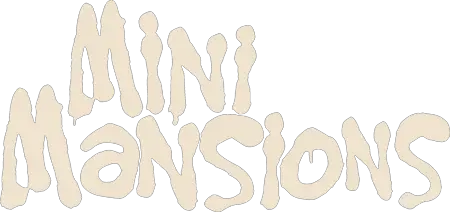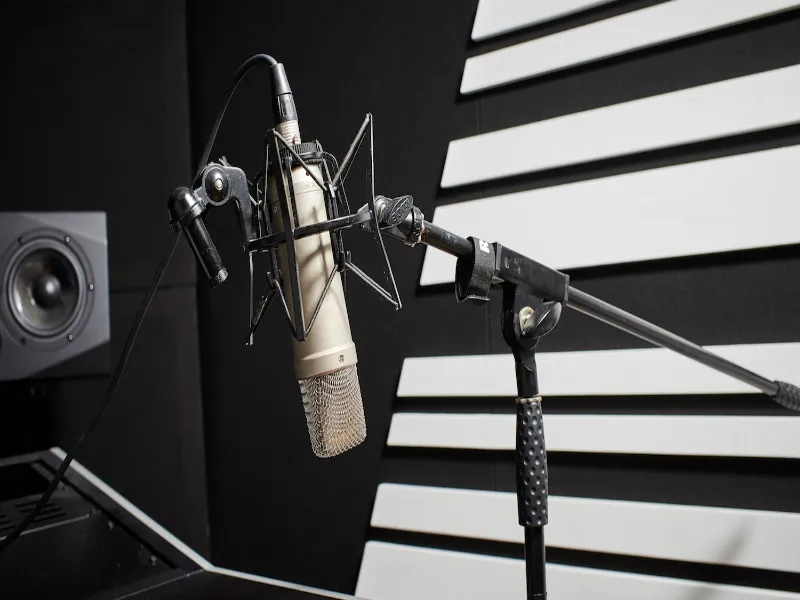Are you looking for the best microphone for recording piano? You’ve come to the right place. We have the perfect solution for you. Our top-of-the-line microphone is designed specifically for recording pianos and will give you the best sound quality possible. This article will review some of the best microphones on the market and help you find the perfect one for your needs.
Best for Overall: [amazon link=”B0080NM08E” title=”Earthworks Audio PM40 PianoMic Series Instrument Condenser Microphone” /]
Best for Live Performance: [amazon link=”B0002D0JHE” title=”Shure SM81-LC Cardioid Condenser Instrument Microphone” /]
Best for Recording : [amazon link=”B08BG8XK1Z” title=”AKG P120 Large-Diaphragm Condenser Microphone” /]
Best for Acoustic Band: [amazon link=”B01LDMHH3G” title=”Myers Pickups The Grip Plus Deluxe Piano Accordion Microphone System” /]
Best for Symphony Orchestra: [amazon link=”B01GV9IT4M” title=”beyerdynamic TG D71C Condenser Boundary Microphone TG D71C” /]
[amazon bestseller=”Best Microphone For Recording Piano” items=”20″ ]
Table of Contents
Best Microphone For Recording Piano Reviews 2024
Earthworks Audio PM40 PianoMic Series Instrument Condenser Microphone
[amazon box=”B0080NM08E” ]
If you’re in the market for an excellent stereo piano mic, the Earthworks Audio PM40 PianoMic Series Instrument Condenser Microphone is a perfect option to consider. This mic is incredibly lightweight, making it easy to transport and set up.
Its profile is also extremely low, making it ideal for use in tight spaces. Plus, the PM40 offers an incredible gain level before feedback, allowing you to get great sound without worrying about feedback issues.
Pros
- Incredible gain level before feedback.
- Low profile.
- Lightweight.
- Easy to install.
Cons
- Pricey.
Shure SM81-LC Cardioid Condenser Instrument Microphone
[amazon box=”B0002D0JHE” ]
Are you in the market for a tremendous new microphone to record your piano? If so, you should check out the Shure SM81-LC Cardioid Condenser Instrument Microphone.
This microphone is perfect for recording instruments like the piano and delivers stunning sound quality with low noise and high output clipping levels.
It also has a cardioid polar pattern that ensures maximum rejection of off-axis sounds and comes with a swivel adapter, attenuator-switch lock, foam windscreen, and case for easy carrying and storage.
So if you’re looking for the best microphone for recording piano, the Shure SM81-LC is worth checking out!
Pros
- Low noise.
- High output clipping level.
- Cardioid polar pattern for maximum rejection of off-axis sounds.
- The flat frequency response curve for exact reproduction of audio sources.
- Solid construction for durability.
- Come with an attenuator-switch lock, a swivel adapter, a foam windscreen, and a case for easy carrying and storage.
- The RF susceptibility is low.
- Work well in all temperature conditions.
- You can select the low-frequency response.
- Wide frequency response.
Cons
- It requires phantom power.
- It will operate with slightly decreased sensitivity and headroom with supplies as low as 11 volts DC.
- It would be best to utilize a balanced microphone cable: XLR-to-TRS or XLR-to-XLR.
AKG P120 Large-Diaphragm Condenser Microphone
[amazon box=”B08BG8XK1Z” ]
The AKG P120 Large-Diaphragm Condenser Microphone is an excellent choice for recording piano. It has a 2/3″ accurate condenser diaphragm with 24millivolts/Pa sensitivity, which delivers precise sonic detail.
The cardioid mic also blocks surround sounds and has a switchable bass-cut filter that removes low-frequency noises and rumble.
It can work with loud sound sources by turning a -20-decibel attenuation pad. Its maximum handling ability is from 130 to 150 decibels SPL.
Additionally, the P120 can withstand rough handling due to its sturdy metallic die-cast body and stainless steel grille. It also comes with a mic stand adapter and a 10-foot balanced XLR cable. Overall, the AKG P120 is a versatile and durable microphone perfect for recording piano.
Pros
- Accurate condenser diaphragm.
- Good sensitivity.
- Cardioid mic blocks off surround sounds.
- A switchable bass-cut filter removes low-frequency noises and rumble.
- Sturdy metallic die-cast body and stainless steel grille.
- It includes a mic stand adapter and a 10-foot balanced XLR cable.
- Precise sonic detail.
- Versatile.
Cons
- None found.
Myers Pickups The Grip Plus Deluxe Piano Accordion Microphone System
[amazon box=”B01LDMHH3G” ]
The best microphone for recording piano is the Myers Pickups The Grip Plus Deluxe Piano Accordion Microphone System. It is the most miniature active/pre-amplifier pickup on the market today, and it comes with 3 flexible micro-goosenecks for even more adjustable.
This system instantly turns your instrument into an acoustic/electric instrument, plugin, and play. It is an excellent choice for those who want to get the best sound possible from their recordings.
Pros
- The smallest active/pre-amplifier pickup.
- 3 flexible micro-goosenecks for more adjustable.
- It turns the instrument into an electric or acoustic instrument.
- Easy to use.
- Compact and lightweight.
Cons
- It requires batteries.
beyerdynamic TG D71C Condenser Boundary Microphone TG D71C
[amazon box=”B01GV9IT4M” ]
The beyerdynamic TG D71C Condenser Boundary Microphone is an excellent option for those looking for a quality microphone to record a piano. It has an extremely solid cover in a slim, compact design, making it ideal for use with Cajon or bass drums.
It also has a half-cardioid polar structure for max gain level before feedback. Its impulse fidelity is high, and its quick attack time makes it an excellent choice for recording piano.
Additionally, the built-in pre-amplifier provides a robust and natural sound, and the manufacturer mounted a front red LED indicator light for the phantom power (11 volts – 52 volts). Finally, the anti-slip rubber bottom ensures that your microphone stays in place during use.
Pros
- Extremely solid housing
- Slim and compact design.
- Ideal for Cajon or bass drums.
- Half-cardioid polar construction for maximum gain level before feedback.
- Impulse fidelity is high.
- Quick attack time.
- The built-in pre-amplifier provides robust and natural audio.
- The front red LED indicator light is for Phantom power
- Anti-slip rubber bottom helps the microphone keep in place during use.
- The max sound pressure is 148 decibels.
Cons
- It is the generic part’s aftermarket.
Kimyah KY-88 Pair of Small Diaphragm Condenser Instrument Microphone
[amazon box=”B09C22GLZX” ]
The Kimyah KY-88 Pair of Small Diaphragm Condenser Instrument Microphone is an excellent choice for anyone looking for a quality microphone for recording piano.
This microphone has a cardioid polar pattern, which helps to shield the microphone from any background noise. It also has a diameter (16 millimeters) small diaphragm, which gives it a high pickup sensitivity. This makes it ideal for picking up sounds from acoustic guitars and other string instruments.
The microphone also has a self-developed electric circuit. Thus, the frequency response is wide and smooth. This gives the microphone a rich and low-frequency response, making it perfect for use in a professional recording studio. The microphone also has a switchable low-cut filter, which helps to reduce any unwanted noise.
The Kimyah KY-88 comes with a black carry case, perfect for traveling. The case is made from a high-density premium sponge, which helps to keep the microphone and stand firmly in place. The case is also wearing- and scratch-resistant.
Pros
- The mic is rugged and anti-corrosion.
- High pickup sensitivity.
- The self-developed electric circuit gives the microphone a broad and smooth frequency response.
- The black carry case is perfect for traveling.
- The case is made from a high-density premium sponge, which helps to keep the microphone and stand firmly in place
- 24/7 after-sales service.
Cons
- None.
Samson C02 Pencil Condenser Microphones
[amazon box=”B079VS8763″ ]
The Samson C02 Pencil Condenser Microphones are some of the best for their price. They have a tight super-cardioid polar pattern to capture audio in front of the microphone while minimizing pickup from the side and back, thus increasing isolation and reducing feedback.
They also handle up to 134 decibels SPL sound pressure levels without noise or distortion. The C02 Microphones come with a pair of drum rim mic clips (low on-stage profile), an on-stage stereo mic attachment bar, 2 XLR cables (10 feet), and an Ultimate Support tripod microphone stand with stable-length boom.
I highly recommend the Samson C02 Pencil Condenser Microphones to anyone in the market for a great budget-friendly option.
Pros
- Exact sound reproduction.
- Super-Cardioid polar construction.
- High SPL response.
- Budget-friendly.
- High sensitivity.
- It increases isolation and reduces feedback.
Cons
- It requires over 48-volt phantom power.
MXL 770 Cardioid Condenser Microphone with Blucoil 10-FT Balanced XLR Cables
[amazon box=”B08DDHNCYH” ]
MXL 770 Cardioid Condenser Microphone with Blucoil 10-FT Balanced XLR Cables is a studio-grade microphone perfect for capturing vocals and instruments accurately due to the transformerless balanced output and high-end FET pre-amplifier.
This microphone has a cardioid polar structure that helps reduce off-axis audio and suppresses feedback. Additionally, the MXL 770 has a flat frequency response of 30 hertz to 20 kilohertz which is perfect for reproducing vocals accurately.
This microphone can also handle up to 137 decibels SPL, making it great for various applications. Finally, the MXL 770 comes with a shock isolation mount and rugged carry case.
Pros
- Crystal-clear sound.
- Low noise.
- High output gain.
- The cardioid polar structure reduces off-axis sound and feedback.
- The flat frequency response of 30 hertz to 20 kilohertz.
- It can handle up to 137 decibels SPL.
- Shock isolation mounts and a carry case.
Cons
- The rugged carry case is excellent for protection, but it may be bulky for some users.
Samson C02 Pencil Condenser Microphones
[amazon box=”B08Q8LN7H4″ ]
The Samson C02 Pencil Condenser Microphones are among the best on the market today. They offer accurate sound reproduction and are perfect for capturing crystal-clear sound.
The tight cardioid polar pattern also picks up sound sources in front of the mic capsule and rejects off-axis noises, making them ideal for use in noisy environments.
Additionally, the stereo pair can withstand up to 134 decibels SPL, making them perfect for miking cymbals, overhead drums, and acoustic instruments.
The C02s is powered with 48-volt phantom power and compatible with mic preamplifiers’ audio interfaces. Overall, the Samson C02 Pencil Condenser Microphones are an excellent choice for anyone needing a high-quality microphone for recording piano.
Pros
- Precise sound reproduction.
- Pick up crystal-clear sound.
- Record sound sources in front of the mic capsule and rejects off-axis noises.
- High sensitivity.
- It can withstand up to 134 decibels SPL.
- Compatible with audio interfaces with mic pre-amplifiers.
Cons
- It requires phantom power.
- You can’t plug it directly into your computer.
MXL 770 Cardioid Condenser Microphone with Blucoil Portable USB
[amazon box=”B09GPQLZLC” ]
The MXL 770 Cardioid Condenser Microphone is an excellent choice for anyone looking for an affordable microphone to record their piano. This mic offers a warm sound with extra clarity, and its cardioid polar structure helps reject off-axis sound pickup.
It also comes with a hard case, shock mount, and a USB audio interface with phantom power of 48 volts, making it an excellent option for recording directly onto a computer. The Blucoil interface also offers direct monitoring, so you can listen to the mic input signal in real-time without any latency via headphones.
Overall, the MXL 770 is a great choice for anyone looking for an affordable, easy-to-use microphone for recording their piano.
Pros
- Affordable.
- Warm sound with extra clarity.
- Cardioid polar structure rejects off-axis sound pickup.
- Direct monitoring through headphones.
- USB audio interface
- Hard carrying case and shock mount.
- 5-foot USB cable.
- The Blucoil Interface helps you follow via speakers or studio monitors.
Cons
- Have to plug into a phantom power to use.
MXL 770 Cardioid Condenser Microphone A1572
[amazon box=”B082FPBXW9″ ]
The MXL 770 Cardioid Condenser Microphone is an excellent choice for those looking for a microphone to record a piano.
This microphone has a cardioid polar construction, which means that it picks up sounds in front of it while rejecting audio pickup from the sides and rear. This makes the MXL 770 ideal for recording instruments such as pianos, where you want to capture the instrument’s sound without picking up any ambient noise.
The MXL 770 also features a -10-decibel pre-attenuation switch, which allows you to handle loud sound sources without clipping. This is an excellent feature if you’re looking to record a grand piano or other loud instruments.
Overall, the MXL 770 is an excellent choice for those looking for a microphone to record a piano. It reproduces detailed sounds, provides clear audio reproduction, and can handle loud instruments well.
Pros
- Ideal for string instruments.
- Reproduction of detailed, precise, and clear sounds.
- Handles loud instruments well.
- The sound pressure is up to 137 decibels SPL.
- Transparent highs.
- A solid bass.
- Low noise.
- Broad frequency response.
Cons
- It requires phantom power.
happymusic CM2 Small Diaphragm Condenser Microphone CM2
[amazon box=”B09SLJG1FH” ]
I am thoroughly impressed with the happymusic CM2 Small Diaphragm Condenser Microphone CM2! These mics are incredibly accurate and perfect for capturing the nuances of your acoustic instruments. I have used them for recording piano, and they have provided an exceptional level of detail and clarity.
The CM2s are also great for live applications and can easily handle sound pressure levels of up to 134 decibels SPL. The cardioid polar pattern is excellent for minimizing feedback and increasing isolation. The included shock-mounted microphone clips and foam windscreens are also beneficial in reducing noise and vibration.
Overall, the happymusic CM2 Small Diaphragm Condenser Microphone CM2 is a great microphone that I would highly recommend to anyone looking for a high-quality recording or live sound solution.
Pros
- Great for capturing the nuances of your acoustic instruments.
- It can handle sound pressure levels of up to 134 decibels SPL
- The cardioid polar construction minimizes feedback and increases isolation.
- The shock-mounted clips and foam windscreens decrease noise and vibration.
Cons
- None.
MXL 770 Cardioid Condenser Microphone with Pop Filter Windscreen
[amazon box=”B08HSLTJ52″ ]
MXL 770 Cardioid Condenser Microphone with Pop Filter Windscreen is one of the best microphones for recording piano. It accurately reproduces detailed sounds with its small 22-millimeter condenser capsule.
The cardioid polar pattern also rejects off-axis sound pickup, perfect for pianos, vocals, and string instruments. The included shock isolation mount and rugged carry case further add to the quality of this microphone.
The MXL 770 also has a -10-decibel pre-attenuation switch, which allows it to handle loud instruments quite well. Overall, the MXL 770 is an excellent choice for anyone looking for a high-quality microphone for recording piano. It delivers warm and clear audio while also rejecting off-axis audio pickup. I highly recommend it!
Pros
- It reproduces detailed and precise sounds.
- Low-noise FET pre-amplifier.
- Transformerless balanced output.
- Cardioid polar structure.
- Warm sound with extra clarity.
- -10-decibel pre-attenuation switch.
- Itan handle up to 137 decibels SPL.
- Shock isolation mount.
- Solid carry case.
- Pop filter windscreen.
- Dual-layer mask shield.
Cons
- It needs over 48-volt phantom power to operate.
PYLE PDKM7-C Condenser Mic Microphone
[amazon box=”B083P6CTVH” ]
If you’re looking for an affordable condenser mic to record piano, the Pyle PDKM7-C is an excellent option. This mic has a rugged body construction, and it includes a clip and windscreen.
The PDKM7-C is great for live performance and studio recording. It’s a great mic at this price point, and it’s sure to give you great results. It also takes a standard XLR cable.
Pros
- Suitable for live performance and studio recording.
- Affordable.
- Rugged body construction
- Includes clip and windscreen.
- Standard XLR cable.
- Ideal for Hi-hats Mandolin, drum set, and cymbals.
Cons
- None found.
Applied Microphone Technology Piano Microphone AMT M40
[amazon box=”B008BG90MO” ]
If you’re in the market for the best microphone for recording piano, you can’t go wrong with the Applied Microphone Technology Piano Microphone AMT M40. This mic is designed specifically for recording piano, and it delivers stunning results.
The M40 is hand-made in the US, and it’s one of the most natural-sounding piano mics on the market. You can use it with the lid open or closed, and it doesn’t require any microphone stands. It also can record high sound pressure levels, up to 141 decibels.
The M40 is a mono mic, but it can split the signal and roll frequencies off in a specific method to create a stereo. The mic terminates to the AP 40 aluminum pre-amplifier with chip technology, which a 9-volt battery or phantom power can power.
The M40 is an excellent choice for any pianist looking for the best microphone for recording piano. It’s well-built and sounds wonderful.
Pros
- Handmade product.
- It can pick up the most natural sound.
- You can use it with the lid open or closed.
- Record high sound pressure levels
- it doesn’t require any microphone stands
- Solid construction is made of anodized aluminum at the aviation level.
- It can split the signal and roll frequencies off to create a stereo.
Cons
- None
Factors To Consider When Choosing The Best Microphone For Recording Piano
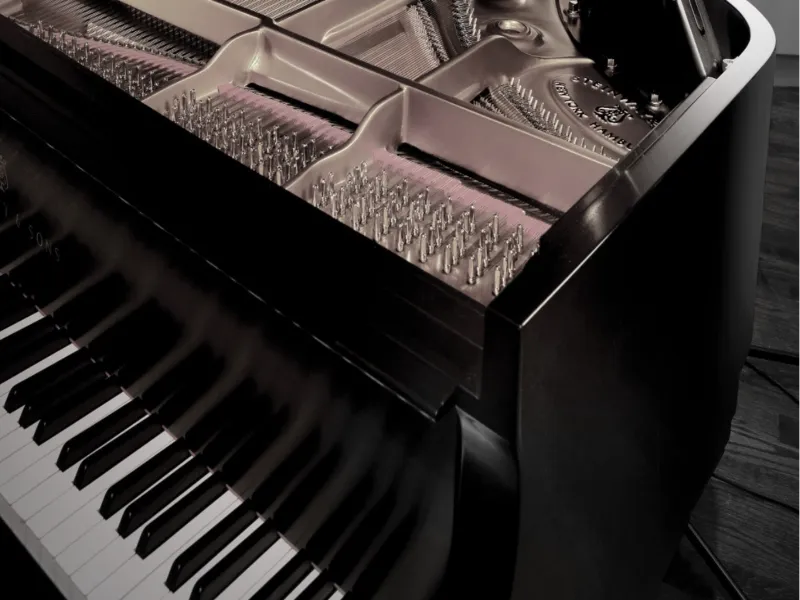
When choosing the best microphone for recording piano, you need to consider a few key factors. The following will help you make the best decision for your needs.
Size and Weight of the Microphone
The first factor you need to consider is the size and weight of the microphone. If you are planning on using the microphone for live performances, you will need to choose a model that is easy to carry around.
However, if you are only going to be using the microphone for recording purposes, you can select a model that is a bit heavier and larger.
Polar pattern
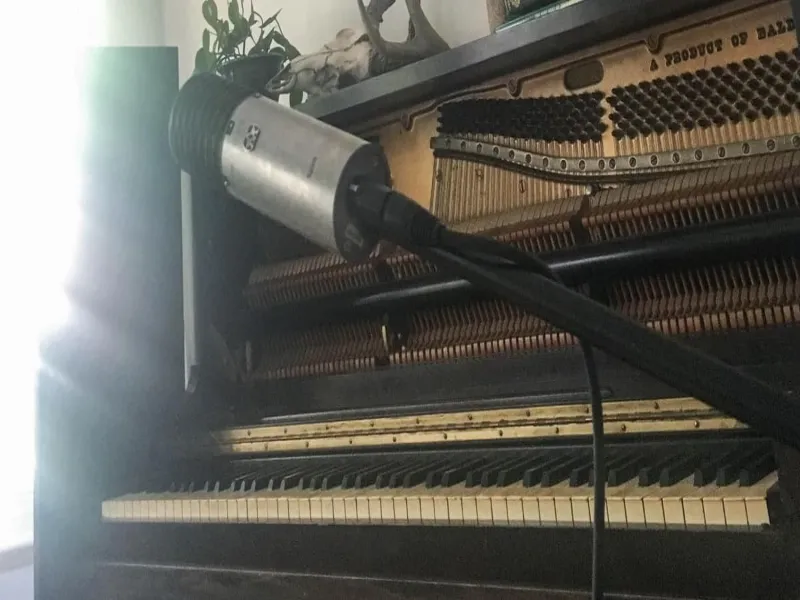
Another factor to consider is the polar pattern of the microphone. This refers to the direction in which the microphone picks up sound.
There are 3 main types of polar patterns: cardioid, omnidirectional, and bidirectional. Cardioid microphones are best for recording vocals and instruments, while omnidirectional microphones capture ambient sound. Bidirectional microphones are best for recording interviews.
Frequency response
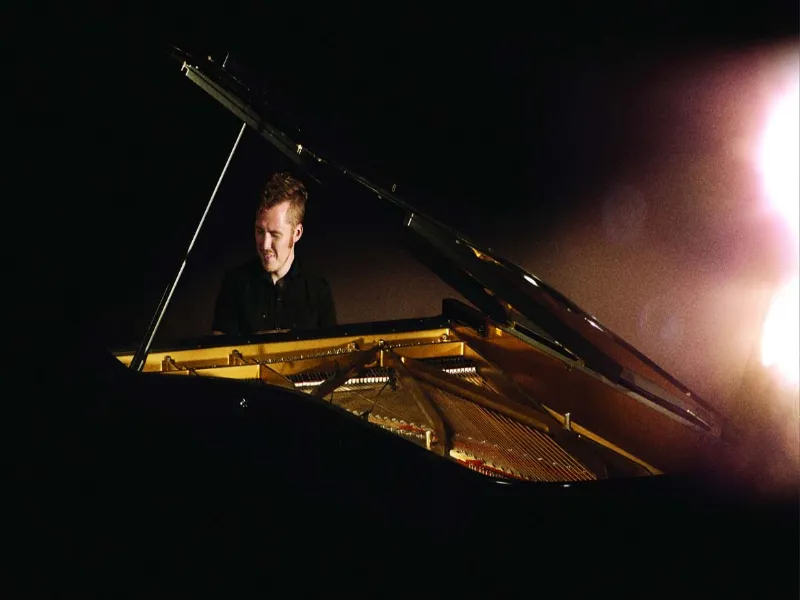
The frequency response is the range of frequencies that it can pick up. For example, a microphone with a frequency response of 50 hertz to 15 kilohertz will be able to pick up the lowest and highest notes on a piano.
However, if you are only interested in recording the middle range of the piano, then you can choose a microphone with narrower frequency response.
Sensitivity
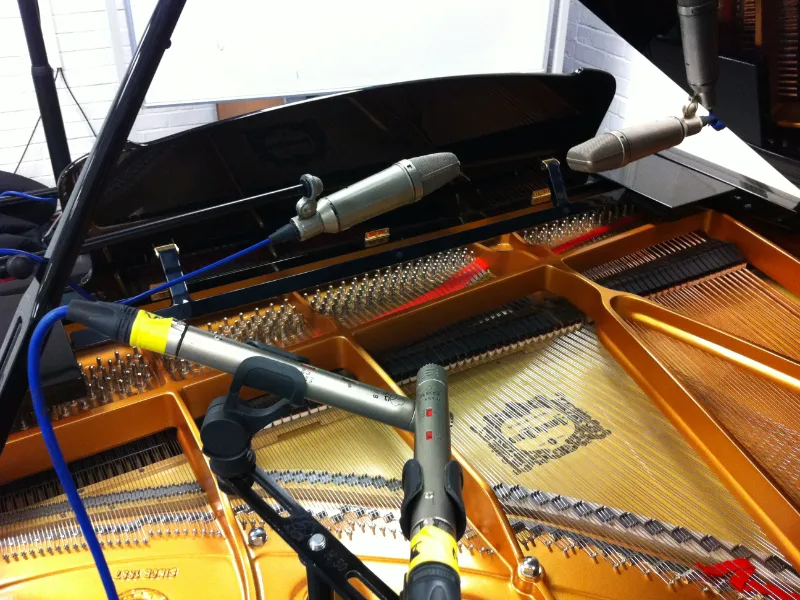
The sensitivity of a microphone is the amount of sound pressure that it can detect. For example, a microphone with a sensitivity of -30 decibels will be able to pick up sound at a lower volume than a microphone with a sensitivity of -20 decibels.
However, if you are recording in a noisy environment, you will need to choose a higher-sensitivity microphone.
Pre-Attenuation Switch
When you are buying a microphone for recording piano, it is important to know about the pre-attenuation switch of the microphone.
Pre-attenuation switch of the microphone for recording piano is an essential tool that you can use to adjust the instrument’s sound before it is recorded.
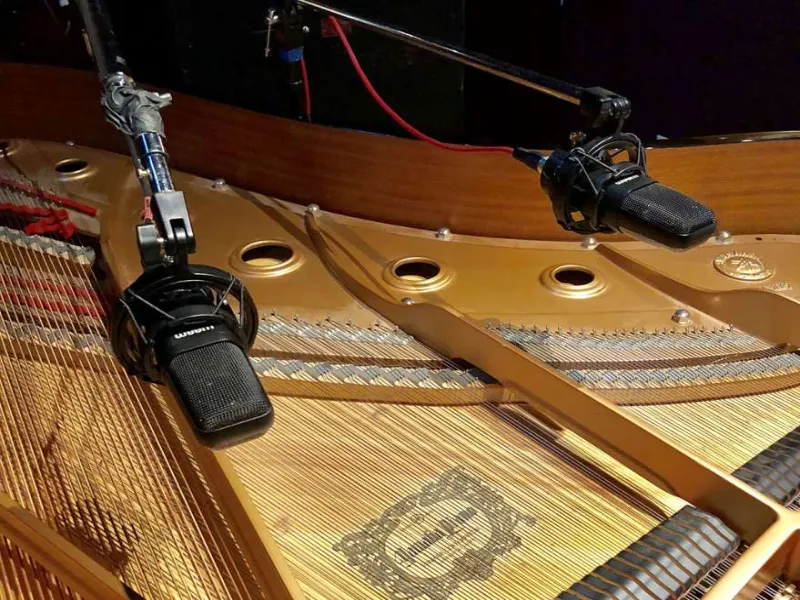
This switch helps to reduce the amount of sound sent to the microphone, which in turn allows for a better quality recording. When this switch is turned on, it attenuates or reduces the sound by a certain amount, making it softer and more manageable for the recording process.
This switch is used to control the amount of amplification before the signal reaches the mic capsule. When this switch is turned off, it allows more of the sound from your instrument to reach the mic capsule, which results in a louder and clearer recording. If you have trouble getting a clear recording, try turning the pre-attenuation switch on.
Size of the Diaphragm
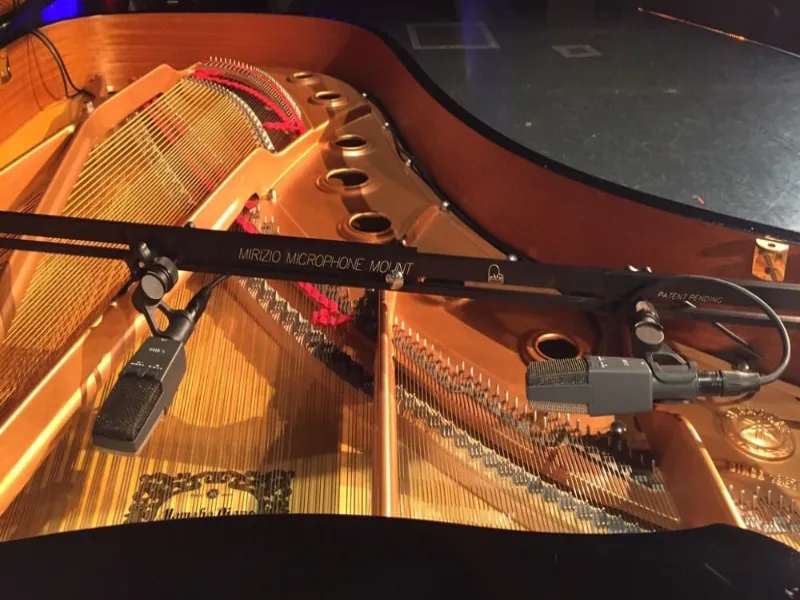
When choosing a microphone for recording piano, it is crucial to consider the size of the diaphragm. The diaphragm is the part of the microphone that vibrates when sound waves hit it, and it is responsible for converting the sound waves into electrical signals.
The larger the diaphragm, the better the microphone will record low frequencies. If you are looking for a microphone to record classical or jazz piano, it is best to choose a large-diaphragm microphone.
Type of Power Supply
One final consideration when choosing a microphone for recording piano is the type of power supply. There are 2 main types of power supplies: phantom power and battery power.
Phantom power is supplied by an external source, while batteries provide battery power within the microphone itself. If you are looking for a microphone that is easy to use and does not require an external power source, it is best to choose a battery power microphone.
Included Accessories

When buying a microphone for recording a piano, it is crucial to consider the included accessories. Some microphones come with a stand, while others do not. If you need a stand for live performance, make sure to purchase one separately.
Some microphones have better shock mounts to reduce handling noise or better pop filters to reduce plosives. Additionally, some microphones include a carrying case or pouch. This can help protect your microphone when it is not in use.
Finally, some microphones come with a windscreen. This is a small piece of material that helps to reduce the amount of wind noise picked up by the microphone.
Sound Reproduction
When you are looking to buy a microphone for recording piano, it is vital to understand the different ways they can reproduce sound. The 3 main types of microphones are dynamic, condenser, and ribbon. Each type has its own strengths and weaknesses, so it is vital to select the right one for the job at hand.
Dynamic microphones are best suited for recording loud sounds, such as drums or electric guitar. They are less sensitive than condenser microphones, so they are not ideal for recording delicate sounds like an acoustic piano. However, dynamic microphones are very rugged and can withstand high sound pressure levels.
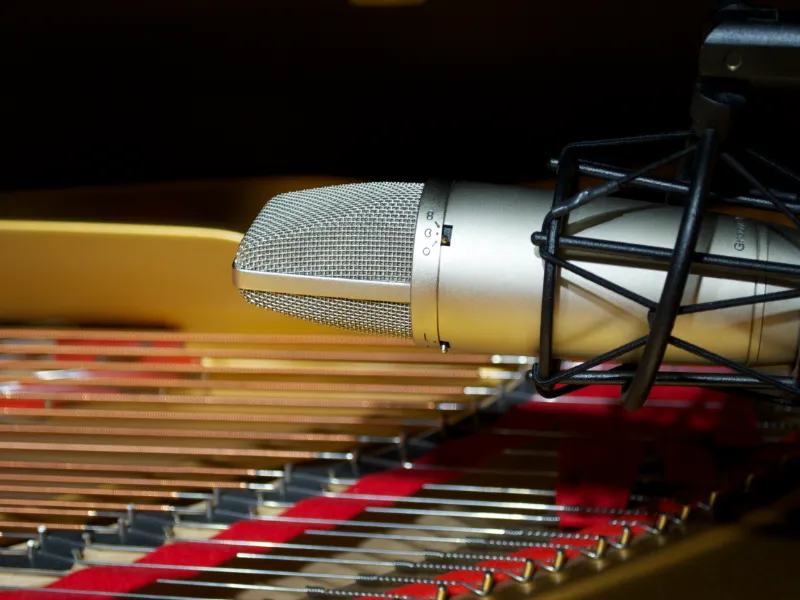
Condenser microphones are best suited for recording softer sounds, such as acoustic instruments or vocals. They are much more sensitive than dynamic microphones, so they can pick up subtle details that would be lost with a less sensitive microphone.
However, condenser microphones require power to operate, so they are unsuitable for live performances.
Ribbon microphones are best suited for recording both loud and soft sounds. They are very sensitive, so they can pick up a wide range of frequencies. However, ribbon microphones are fragile and can be damaged by high sound pressure levels.
Connection Types
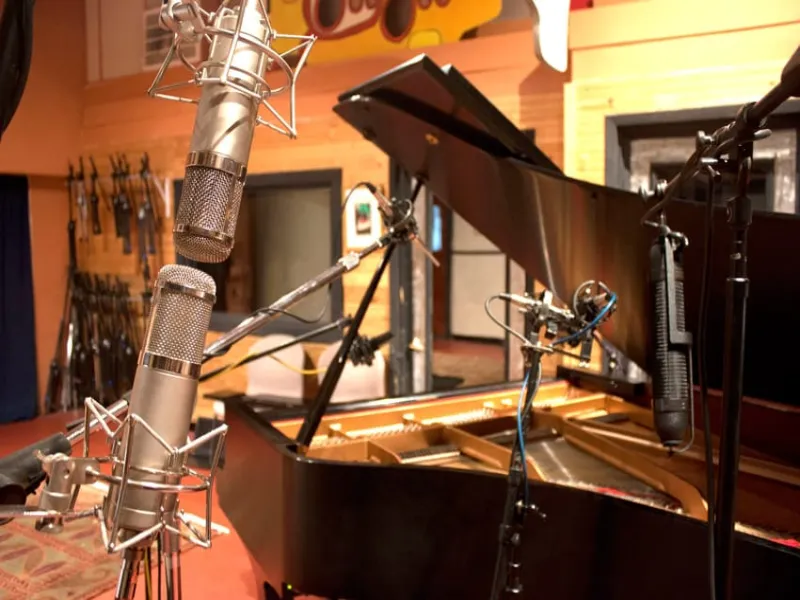
When it comes to microphones for recording piano, you have a few different connection types to choose from. Here is a breakdown of the three most common connection types:
XLR- This type of connection uses 3 pins and is found on professional-grade microphones. It offers the best sound quality and can be used with various devices.
Mini-XLR- This type of connection is similar to XLR but uses a smaller connector. It is often used on portable microphones and offers good sound quality.
USB- This type of connection is found on many consumer-grade microphones. It is easy to use and can be plugged into any computer or laptop. However, it does not offer the same sound quality as XLR or mini-XLR connections.
Sound Pressure Level
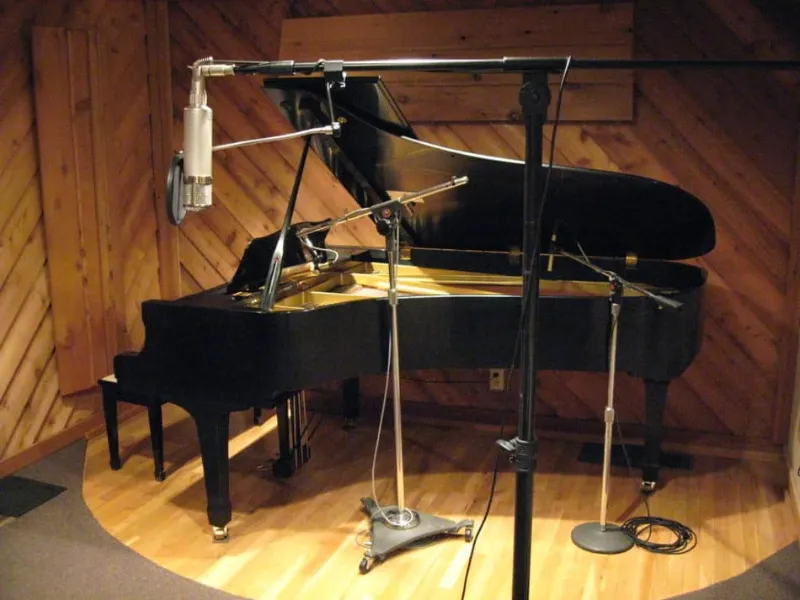
When buying a microphone for recording a piano, it is crucial to consider the microphone’s sound pressure level (SPL). The sound pressure level measures how loud the microphone can get before it distorts the sound.
A high SPL rating (over 130 decibels) means that the microphone can handle louder sounds without distorting them, ideal for recording piano.
Directionality
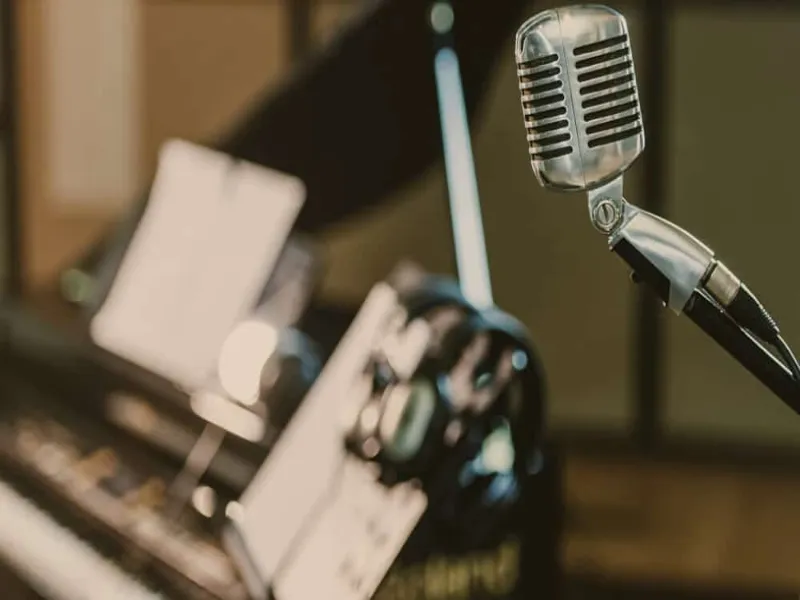
The directionality of the microphone is also an important consideration when recording piano. A microphone with a directional pattern will pick up sound from one direction, while an omnidirectional microphone will pick up sound from all directions.
For recording piano, it is best to use a microphone with a directional pattern to focus on the sound of the piano and not pick up any other background noise.
Compatibility

When looking to buy a microphone for recording piano, it is essential to consider the compatibility of the microphone with the device you are using.
Some microphones are best suited for use with specific devices and may not be compatible with others. It is important to research which microphone best suits your needs before purchasing.
Warranty
When it comes to microphones for recording piano, there are a few things you need to consider. One of the most important is the warranty. Most good-quality microphones come with a warranty, but not all do. So be sure to check that before you make your purchase.
Another thing to keep in mind is the price. You don’t want to spend too much on a microphone that you’re not using very often. But at the same time, you don’t want to sacrifice quality for the price.
Price Range

Last but not least, you need to consider your budget when choosing a microphone for recording the piano. There is a wide range of prices for microphones, so you need to find one that fits your needs and budget.
There are a variety of microphones available on the market, each with its own unique set of features and benefits. Depending on your needs and budget, you can find a microphone that fits both of your requirements.
If you’re looking for the best microphone for recording piano, you’ll need to consider a few factors before purchasing. This article will look at the different price ranges of microphones and what each one offers.
- Low-end microphones:
These microphones are typically priced between 50 and 100 dollars. They offer basic features and are ideal for those just starting with a recording piano.
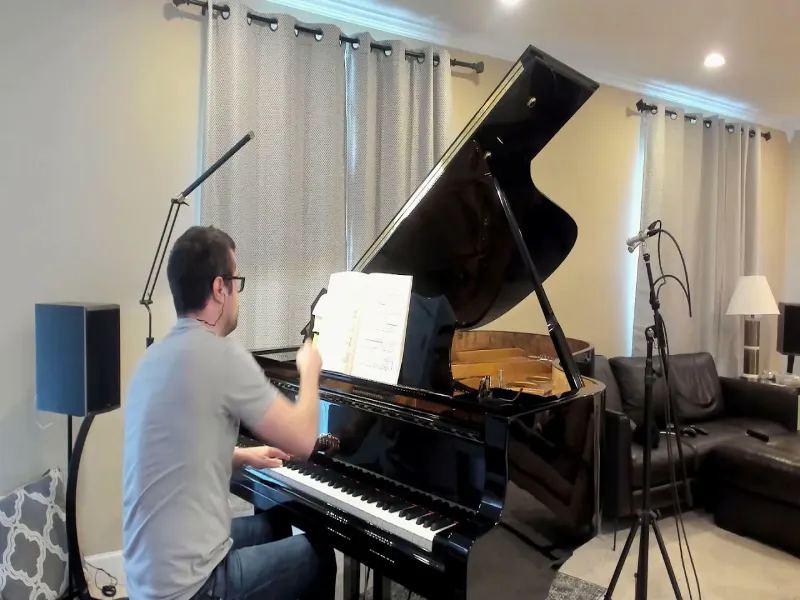
- Mid-range microphones:
Priced between 100 and 200 dollars, these microphones offer more features than the low-end models. They’re ideal for those who have some experience recording piano and need a microphone that can capture more detail.
- High-end microphones:
If you’re serious about recording piano, you’ll need a high-end microphone. The best microphones for recording piano are typically priced between 200 and over 500 dollars. They offer the most features and provide the best sound quality.
FAQs About Best Microphone For Recording Piano
How does the best microphone for recording piano work?

The best microphone for recording piano works by capturing the sound of the piano and transmitting it to a computer or other device. This allows you to record the sound of the piano and save it as an audio file.
What are the benefits of using a good microphone for recording piano?
There are many benefits to using a good microphone for recording piano. Some of the key benefits include:
– A better quality recording: A good microphone will capture all the nuances of your playing, resulting in a high-quality recording.
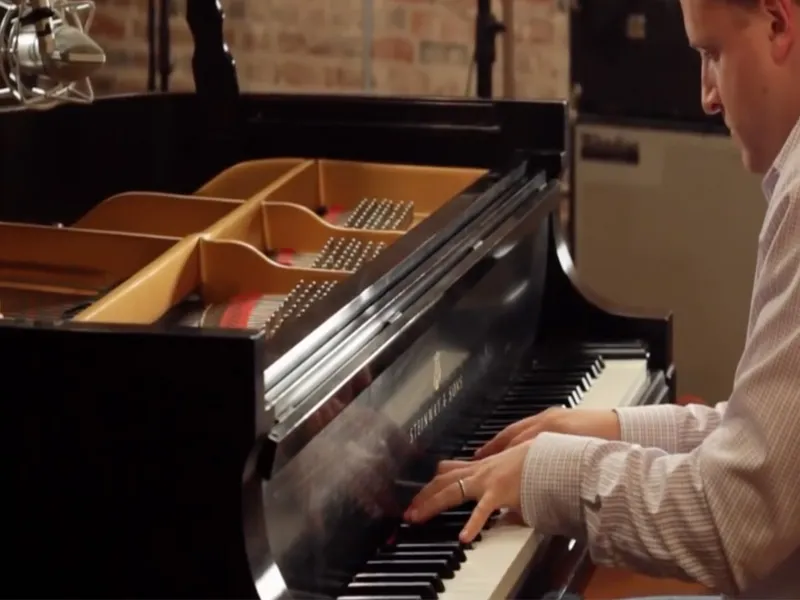
– Reduced noise: A good microphone will help reduce unwanted noise, making your recordings sound cleaner and more professional.
– Greater flexibility: A good microphone will give you greater flexibility when recording piano, allowing you to capture the sound you want.
Overall, using a good microphone for recording piano can significantly improve the quality of your recordings. If you’re serious about getting the best possible recordings, investing in a good microphone is necessary.
Why is it essential to have the best microphone for recording piano?

It is vital to have a good microphone when recording piano because the quality of the captured sound is directly related to the quality of the microphone.
A poor-quality microphone will produce a poor-quality recording, while a good-quality microphone will produce a high-quality recording. Therefore, it is essential to use a good quality microphone when recording the piano to ensure that the best possible sound is captured.
What are some common problems with microphones?
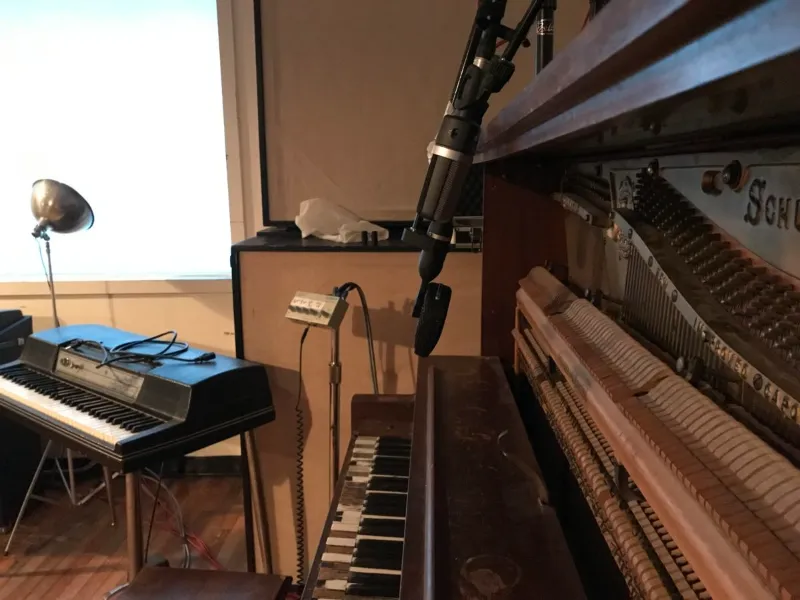
Some common problems with microphones are that they can pick up background noise, be sensitive to wind, and be difficult to position correctly.
Additionally, directional microphones can often only pick up sound from in front of them, which can be a problem if the microphone is positioned off-center.
How do I troubleshoot a microphone issue?

If you’re having trouble with your microphone, you can do a few things to troubleshoot.
First, make sure that the microphone is correctly plugged into your computer. If it is plugged in and still not working, try adjusting the sound settings on your computer or device.
You may also need to update your drivers or install new ones. If you’re still having trouble, try using a different microphone.
Conclusion
Our best choice is Earthworks Audio PM40 PianoMic Series Instrument Condenser Microphone.
[amazon box=”B0080NM08E” ]
The Earthworks Audio PM40 PianoMic Series Instrument Condenser Microphone is an excellent option if you’re looking for a top-notch stereo piano mic. This mic is incredibly lightweight, making it easy to transport and set up. It also has a shallow profile, making it ideal for use in limited spaces. Plus, the PM40 offers incredible gain before feedback, allowing you to get great sound without worrying about feedback issues.
If you’re looking for the best microphone for recording piano, look no further. We’ve reviewed some of the best microphones on the market and highlighted our top pick. This microphone is perfect for capturing the sound of a piano, but you can also use it to record other instruments or vocals. So don’t miss out on this fantastic opportunity to get the best sound quality possible. Click the link below to purchase our top pick today!
